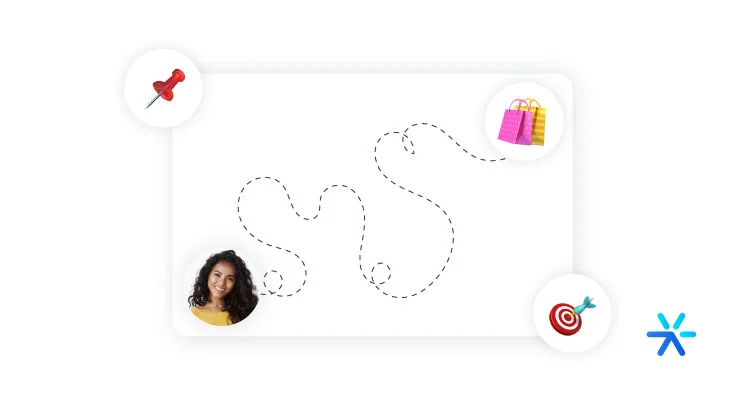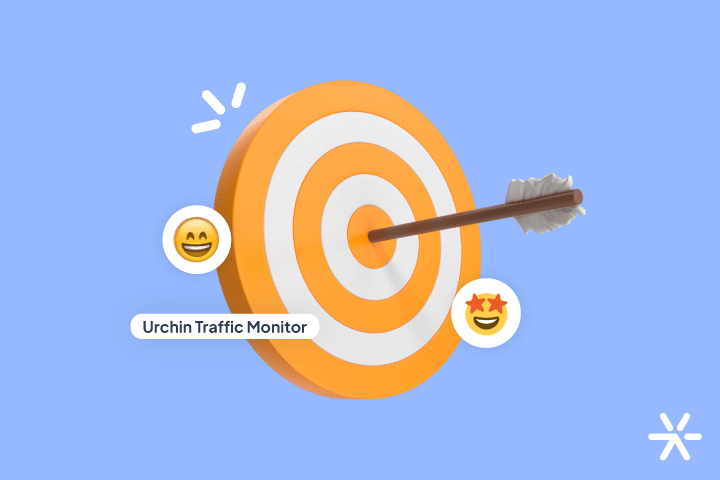What is a Sales Pipeline, Benefits, and How to Create One
Would you like to have a management tool to visualize the sales stages, measure the results in each of them, organize the sales department, and ensure more efficiency in processes?
Then the sales pipeline is what you are looking for.
Learn all about it in the article we prepared:
What is a sales pipeline?

The sales pipeline is a tool, a map to visually organize ongoing business in the sales area of a company.
It presents some stages that prospects must go through before becoming customers.
The structures of the sales pipeline may vary according to each business’s dynamics, but common stages include:
- Qualification: at this stage, the sales representative gathers information about the lead to understand their profile and ensure that they meet the defined qualification criteria (purchasing power, decision-making power, need, etc.).
- Meeting: stage where the salesperson and the prospect discuss the needs and the company’s solution.
- Proposal: when the sales representative sends a formalized proposal, detailing the solution, costs, and deadlines.
- Closing: final stage of negotiations and closing the deal. Here, the prospect officially becomes a customer.
What are the stages of a sales pipeline?
As we mentioned, the stages and steps change according to each business’s dynamics.
But, in general, the stages can be divided into the following steps:
Prospecting
Prospecting is the first stage of the funnel, where new business possibilities are generated: leads.
During the prospecting phase, there is a search for potential consumers.
Prospecting can be done directly by the sales team or leads can be generated by marketing, combining the strengths of these two areas in the company’s commercial process.
Lead Qualification
Not all generated leads represent real business opportunities.
Therefore, it is part of the process to identify which are the best contacts so that the sales team focuses efforts on those with the highest chances of closing deals.
This is the lead qualification work, filtering those with the desired profile and ready for commercial approach.
Also read: What is a Conversion Funnel, What are the Stages, and How to Create One
Sales Call, Demonstration, or Meeting
For commercial approach, besides having access to the lead’s history and understanding their buying stage, the sales representative can use tools such as calls, demonstrations, free trials, and meetings to improve sales arguments and increase conversion chances for each opportunity.
Proposal
This stage consists of the formal presentation of a commercial proposal.
This document should describe all discussed details, such as how the company solves the customer’s needs, the value of the product or service to be contracted, payment terms and conditions, as well as the proposal’s validity.
The sales representative can also reinforce the proposal with competitive differentials and solution benefits.
Negotiation and Commitment
The next stage involves questions regarding the sent proposal, possible negotiations, and adjustments to values and expectations.
Once details are settled, we move on to the next phase.
Contract Signing
The contract signing or purchase finalization formalizes the deal closure for the company.
After-Sales
However, the sales work does not end in the previous stage.
It’s important to be available in the after-sales phase to monitor delivery, solve possible issues, and build a stronger relationship with the customer, increasing the chances of a new purchase or contract.
Benefits of a sales pipeline

In addition to easy visualization and organization of tasks and sales stages, the pipeline also offers other benefits that make a difference for the business and the results achieved.
Business Insights
The sales pipeline provides important information and insights into the commercial process, as well as showing which opportunities are more likely to close.
Team Performance Measurement
The tool also allows measuring the sales team’s results, both collectively and individually.
Revenue Forecasting
It also presents indicators and values of sent proposals, in negotiation, and in the closing phase, which helps in projecting how much the company can earn.
How to create a sales pipeline?

Ready to start creating your own sales pipeline?
Check out the step-by-step guide:
Identify the list of potential buyers
The first step in creating your company’s sales pipeline is to identify and gather the list of leads that will make up its stages.
If you already have a list that is not categorized, you need to organize which are leads, qualified leads, which have already been approached by sales, which have requested a demonstration or free trial, which have received a proposal, which are in negotiation phase, and also those contacts that are already customers.
With this division in hand, update the contacts in the chosen sales pipeline tool.
Assign sales activities for each stage
With all contacts categorized, it becomes easier to understand where sales efforts need to focus and distribute sales functions and activities.
For example, imagine that many leads are awaiting commercial contact or proposal delivery.
Your company may be losing closures due to low response rates or longer response times than consumers expect.
Therefore, assign the necessary actions to each pipeline stage and review with your team those that are pending, based on strategic prioritizations.
Also, consider automating tasks more at the beginning of the sales funnel and qualification stages to free up your employees for actions that truly need them, such as contacts with hot leads, proposal development, and follow-ups.
Define the sales cycle duration
The sales cycle is the time a lead takes from the first stage to closing the purchase or contract.
Defining the sales cycle duration period is important to ensure that leads do not cool down and to monitor sales results.
However, it is necessary to carefully analyze some factors so that this duration is correctly defined.
Product complexity
The more complex your product or solution, the longer the sales cycle.
This happens because more contacts are needed, and sometimes it also requires going through several influencers and decision-makers in the client.
Necessary customization
The sales cycle also increases if your product or service also delivers a customized version.
This is because more time is needed to understand needs, necessary customizations, and even pricing for a fair proposal.
Source of leads
The source of leads also influences the sales cycle since leads from cold calls or third-party lists tend to be less qualified than leads generated and nurtured by marketing, for example.
Decide on the ideal pipeline size
In addition to defining the sales cycle duration, it is also necessary to design the stages of the pipeline itself.
Remember we talked about how these stages can change according to each company’s sales dynamics and processes?
Now is the time to apply this to building your pipeline.
Defining this size also implies defining how many leads will be in your pipeline so that your sales team can perform well.
With this, ideal numbers of contacts in each stage should also be defined.
This is also a way to set goals for each of your sales representatives, with closing numbers, proposal submissions, and commercial approaches that ideally should be made in each sales period (month, semester, etc.).
Remove stagnant business from the pipeline
As time goes by, leads and opportunities that have not closed cool down, and keeping them in the pipeline will inflate numbers because interest in purchase or contracting is no longer real.
It is important to follow up and know how to identify leads that still need more time to make a decision from those that have already exceeded the sales cycle long ago.
Define sales pipeline metrics
Metrics are the best way to understand the health of your sales pipeline, lead distribution, and measure the results of the sales team and each of the sales representatives.
This point is so important that we will address it in detail in the next topic.
Don’t forget to find ways to always generate new contacts, leads, and opportunities to replenish the pipeline with new entries for the commercial team’s work.
What are the sales pipeline metrics you should track?

The most relevant metrics for your sales pipeline are those that provide data for strategic decision-making.
We have selected here those that we consider most relevant in this regard.
Number of deals in the pipeline
The number of deals in your pipeline is the number of opportunities being approached and followed up by your sales team.
These opportunities need to be qualified — do not forget to exclude from the sales map those leads that were once opportunities but are now stagnant, or else this metric will be skewed.
Average deal value
Not all contracts or purchases have the same value, so calculating the average value is best to understand the overall sales landscape.
We should also not only go after high-value opportunities because lower-value ones generally require less effort and can balance finances.
Conversion rate or lead-to-opportunity ratio
To discover conversion rates, you must consider the different stages in the sales funnel.
The calculation can be done by dividing qualified leads by the number of opportunities generated or the number of opportunities divided by the number of clients.
Average closing rate
Now, if you want to see the total relationship between the number of entries in the pipeline and the number of consumers who actually became customers, then the calculation should be done as follows:
Closed deals / total leads in the pipeline
These last two metrics also assist in improving each sales representative’s individual performance.
Sales cycle duration
Your sales cycle depends on the factors mentioned above and your solution’s sales dynamics.
But it also needs to be monitored so that opportunities are worked on within the determined time.
Pipeline value
The pipeline value is calculated based on the total value of deals put on the map.
These data help in sales forecasting for the coming months and also determine if other opportunities need to be generated in the short, medium, and long term.
How to manage your pipeline?

To have a well-functioning pipeline, in addition to building it, maintenance and management are necessary.
Hold sales pipeline review meetings
Maintaining a frequency of sales pipeline review meetings helps in updating the negotiation status, efforts needed to achieve set objectives, and the effectiveness of your team.
Define the frequency of these meetings and analysis periods, as well as who will participate in each of them.
Use a CRM to track your business
A CRM tool is essential for building and managing the sales pipeline.
This type of resource makes everything more visual, with information accessible to the team, and also facilitates organization and saves time for each sales representative.
Learn more about the topic in: 10 Best Sales CRM Software in 2022
Encourage collaboration
Collaboration between sales representatives and leaders also makes a difference.
Therefore, encourage this collaboration through team metrics, communication stimulation, sharing experiences among sellers, and, once again, using a CRM tool that allows fair and transparent distribution of leads.
Create sales pipeline reports
If you do not track your sales pipeline metrics, much of the strategy will go down the drain.
Therefore, in addition to defining metrics, as we have already recommended, create reports that show the evolution of each of them.
Many CRMs already create these reports automatically.
You can take advantage of opportunities like review meetings to review them with the sales team.
Avoid manual tasks
Anything that can be automated makes the sales team’s work easier and reduces lead waiting time.
You can explore your CRM or connect it with other tools for automatic customer service messages on your website, WhatsApp, and social media, for example.
Other automations, such as email flows, work very well for nurturing and qualifying leads that are not yet ready for commercial approach.
For after-sales, automation is also a valuable resource to maintain a relationship and brand presence.
Personalize multiple sales pipelines
If your company works with various types of services or products, has different dynamics and sales teams (such as Inside Sales, Inbound Sales, and Outbound Sales), or wants to position itself in new markets, it’s worth designing different sales pipelines.
These should consider the specifications and needs of each mentioned example.
So yeah, a sales pipeline is absolutely necessary for very complex sales proccesses, specially in SaaS.
Here at Leadster you can improve your lead generation while applying the strategy in a very simple way: with a chatbot that converts leads for you automatically.
Start your free trial today to know more. It’s valid for 14 days and no credit card is required.
Thanks for reading and good luck!







